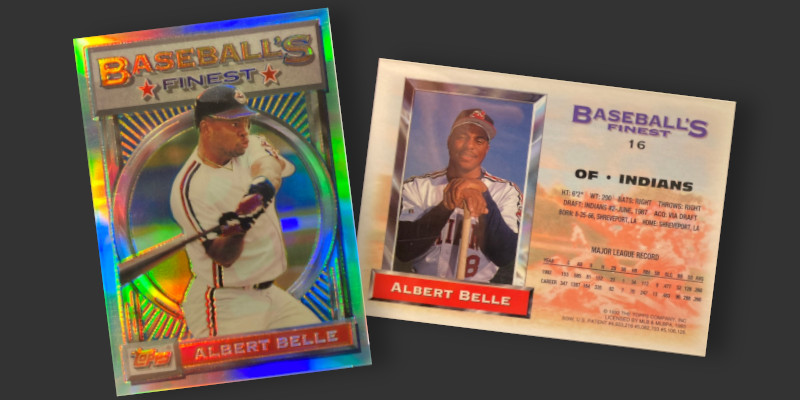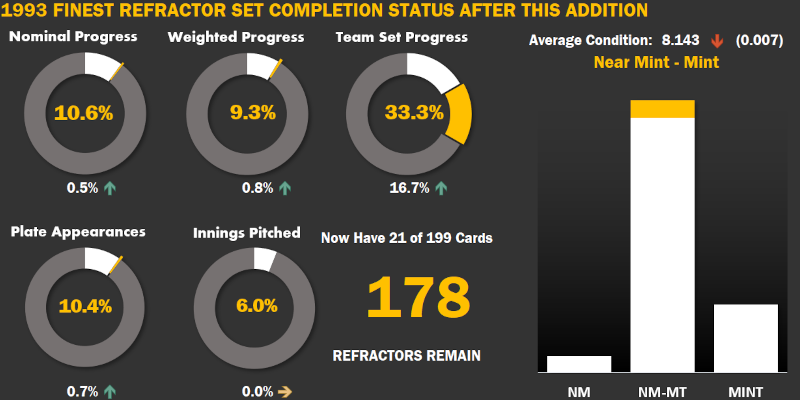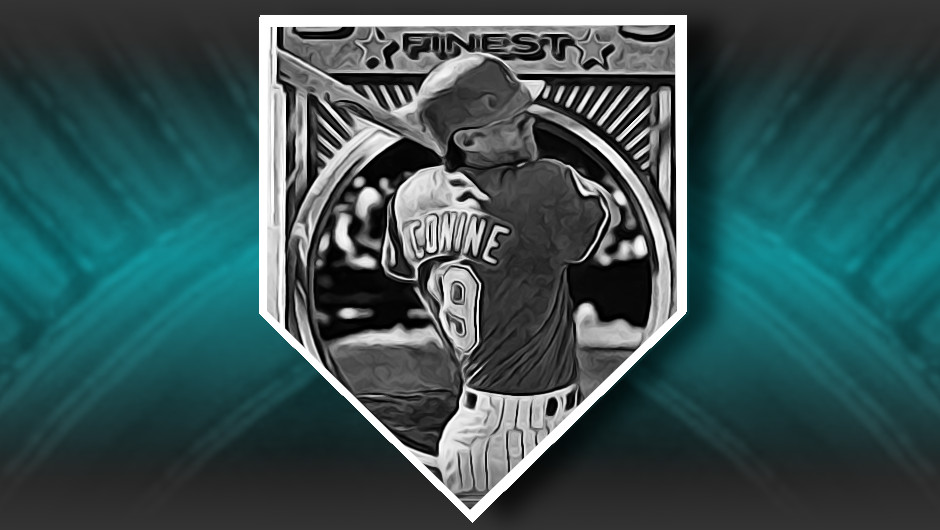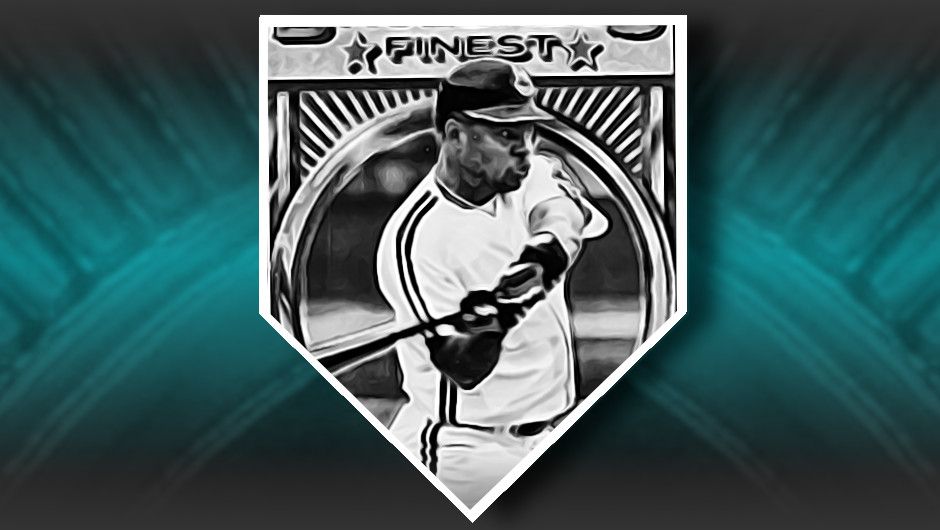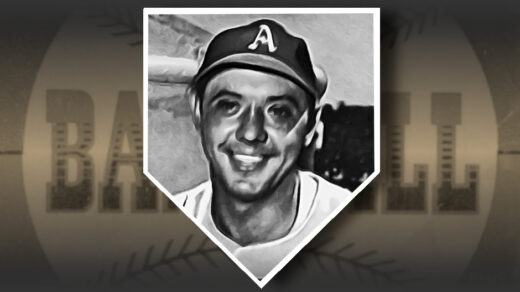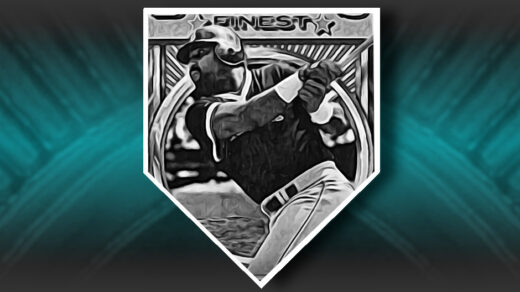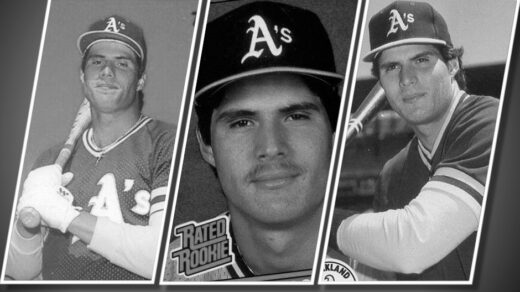Albert Belle presents one of the more interesting character studies in baseball. He comes across in stories a bit like a Batman villain: A promising young man is pushed over the edge into a vat of radioactive baseballs by idiot fans, emerging to find he has superpowers that allow him to destroy American League pitching at will. Instead of embracing these powers, he swears revenge on all who have wronged him and embraces the dark side. His use of a bat to destroy a clubhouse thermostat even gave him the nickname “Mr. Freeze,” a direct reference to a comic book villain.
There are a ton of stories like this swirling around Belle. In addition to violently setting the clubhouse HVAC system below 60 degrees, he apparently destroyed several post-game buffet spreads. Teammate Kenny Lofton’s CD player was similarly dispatched when Belle wanted some quiet. Completely avoidable alcohol problems surfaced early, further accelerating some of these actions. Much more intelligent than the average baseball player, Belle easily held his own in conversations with reporters. The problem was interviewers did not know if they were going to get a great, wide-ranging interview or become the victim of a verbal homicide. Eventually he settled for the Ted Williams approach to media relations: Ignoring everyone with media credentials prior to a game.
Of course, like in any story, there are multiple threads driving these overreactions. In the minor leagues Belle encountered fans too dumb to realize how stupid their racist jeers made them look. The injustice isn’t so much in the act itself, but rather that the perpetrators then go about their day proud of what they did.
Personnel management and rule enforcement is often subjective, leading to discrepancies in how teammates are treated. Belle brooded on these differences and would explode once some invisible tripwire was crossed. In 1996 Belle was chewed out for not breaking up a double play. A week or so later he was hit by a pitch and had taken his place at first base. An Eddie Murray grounder set up an easy double play, which a recently-hit by pitch Albert Belle decided to break up. Belle flattened second baseman Fernando Vina with an elbow to the face. Boos rained down from the Milwaukee crowd and Belle was hit again by a pitch in the next inning.
Of course, on some level he may have just been an angry dude. Once angered, he clearly goes well beyond what would be expected from a well-adjusted adult.
Let’s Talk About Baseball
Viewed only from the lens of a box score, Belle was one of the best players of his generation. He finished the 1990s with more RBIs (1,099) than any other player. This total exceeds that of any player in the 1980s and 1970s and falls only 8 runs short of Hank Aaron’s 1960s RBI crown. This is despite Belle (and the rest of baseball) missing 232 days as a result of the 1994-1995 players’ strike.
Like a lot of ’90s sluggers Belle hit a tremendous number of home runs. What set him apart from many was what he did with a bat when the ball stayed on the field of play. A batter typically sees a finite number of pitches that are truly hittable with power. Hitters send these out as home runs and try to make do with just making contact on the pitches that are left over. Belle not only hit tons of homers (almost 400), he consistently hit just as many doubles. He is the only player to hit at least 50 homers and 50 doubles in the same year, doing so in the limited playing time of the strike-shortened 1995 season. The combined effect was a jaw-dropping number of extra base hits. His 103 XBHs from 1995 still rank 6th all-time and came in way fewer plate appearances than those above him. Belle has multiple seasons with more XBHs than the career-highs of luminaries like Albert Pujols, Joe DiMaggio, and Larry Walker.
He almost became one of the 20 or so players with at least 400 total bases in a single season, reaching 399 in 1998. What is so interesting about this total is that it was achieved while also leading the league in sacrifice flies. That’s a lot of close plays that could have easily put him over the 400 mark.
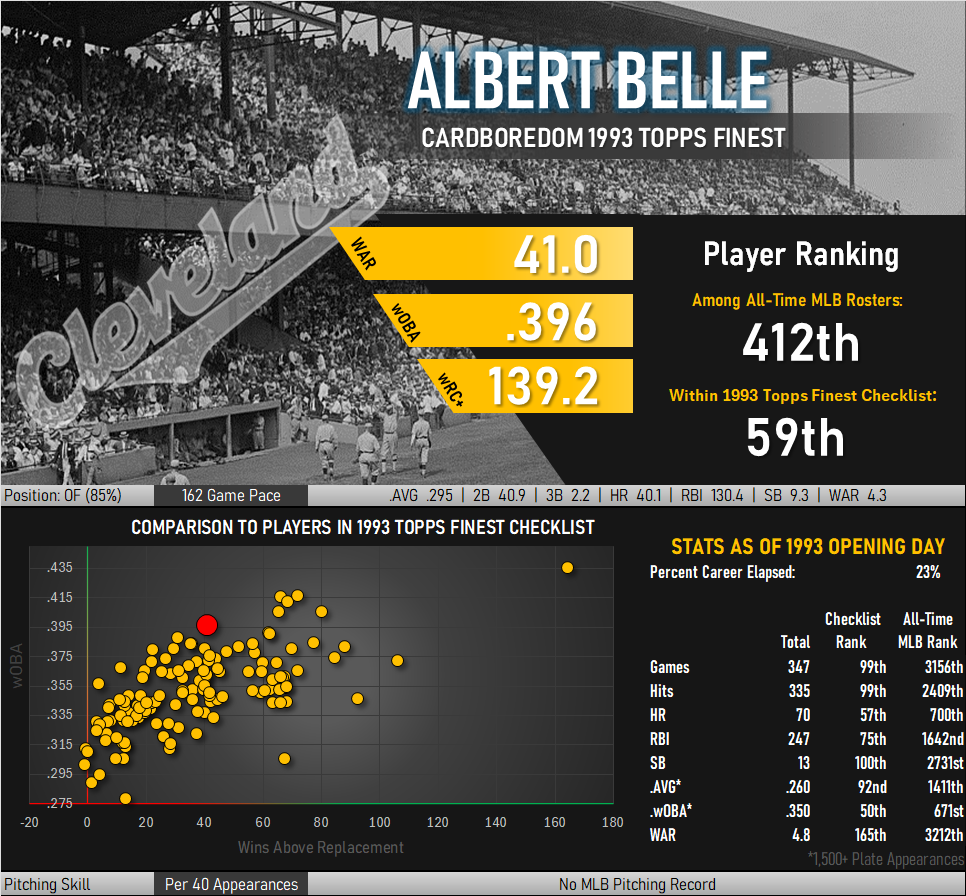
Belle’s career ended much earlier than expected due to a hip condition. Still producing at a roughly 30 double/30 homer pace in his final seasons, it is not a stretch to imagine a full career producing 500 home runs.
Improving the Game with the Belle Rule
If there is one area where Belle ultimately leaves his mark on the game, I hope it comes down to an idea he had in 1999. Playing for the Orioles that season, Belle came to the plate in the bottom of the 11th. The game was tied with BJ Surhoff as the potential winning run on first. A fresh pitcher was brought in to face Belle.
A pitch was thrown high and inside, nicking Belle’s right hand. Belle wanted to drive in the winning run, and taking first base on a HBP was highly unlikely to affect the outcome of the game. What did he do? He shook it off and stepped back into the batter’s box to continue facing Shigetoshi Hasegawa. The plate umpire told him to take his base, and Belle refused. This is an odd situation, so a crowd soon gathered around Belle telling him to go to first. He again refused, making clear his intention to make Hasegawa throw him a good pitch. He eventually agreed to smolder at first base, and Baltimore won two plate appearances later when Cal Ripken drove home Surhoff.
Commentary from the sportscasters in the coverage below make clear this is not the first time Belle tried to do this. I hope it’s not the last time we see a batter take the same approach. If MLB ever introduces a rule making taking first optional, I hope it is named after Belle.
Life Lessons
Belle grew up in a strict household. He applied himself, finished near the top of his class, and attained the rank of Eagle Scout. Scouting teaches lots of things. Besides tying half-hitch knots and building pinewood derby racers, the program tries to instill a sense of honor. One of the things I remember from scouting and similar programs of my childhood is that people’s perception of your honor is formed in the top and bottom 1% of your actions. Your best moments are remembered, as are the times when you were at your worst. The rest is just background noise that only your inner conscience and those closest to you are aware of. Belle’s baseball reputation is one defined by those 1% moments, from dominating the American League offensive tables to taking out frustration on whoever or whatever was in reach.
Belle on Cardboard
In terms of on-field performance versus cost of collecting, I’m not likely to find a better card in the 1993 Refractor set than Belle. I picked this example up at the same time I grabbed my Jeff Conine card. I recently talked about how Conine had a good start on a Ripken-esque consecutive games streak. In a nice coincidence, both Conine and Belle would join Ripken on the Orioles in the season following the end of the streak. When Ripken finally stepped out of the lineup on September 20, 1998, it was Albert Belle that became the active leader in consecutive games played.
